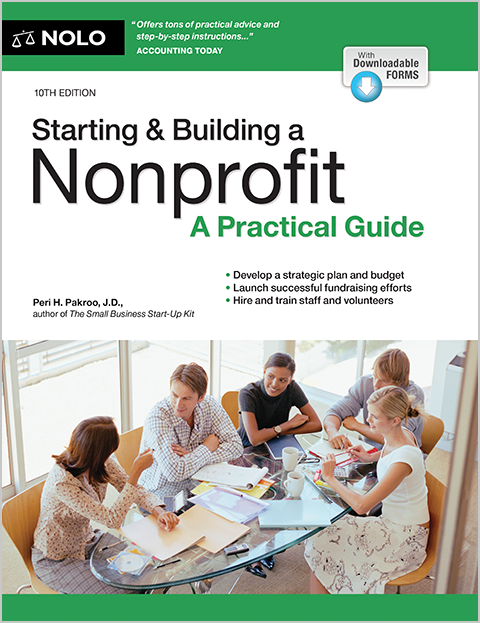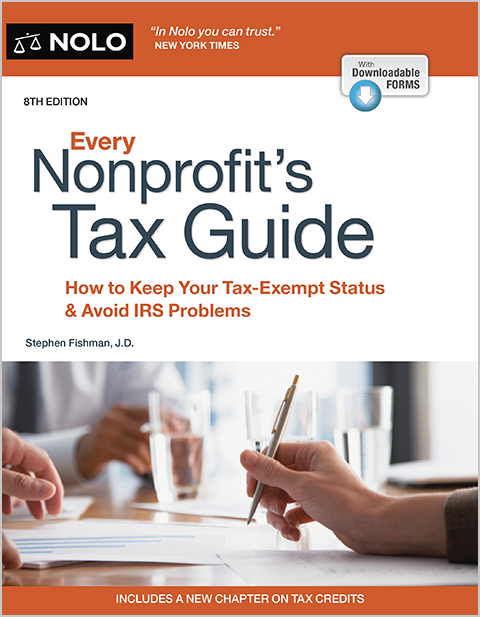Select qualified and enthusiastic board members to help your nonprofit flourish.
One of the fundamental tasks facing the founders of any nonprofit is establishing a board of directors to oversee the organization. The board plays an essential legal and practical role in any nonprofit, even if others (such as an executive director, paid staff, or volunteers) handle the organization's everyday affairs.
The Board's Role
Nonprofits receive favorable tax treatment and other benefits precisely because they are created to serve the public interest. And the nonprofit's board shoulders the legal duty to keep the organization true to its public service mission, so that it continues to deserve its tax-favored status. (This "public trust" role explains why nonprofit directors are sometimes called trustees.)
In addition to setting policies and maintaining the nonprofit's overall direction, a good board also serves an immensely practical role. The board of directors:
- defines the nonprofit's mission
- establishes priorities
- crafts strategies, and
- ensures that plans and programs are implemented.
Without a committed board to tackle these tasks, a nonprofit can quickly run adrift, without clear goals or any specific plans to achieve them.
Board members are also involved in a nonprofit's fundraising efforts. You should be able to count on your board members to spread the word about your good work, use their connections to gain access to potential donors, actively participate in fundraising campaigns, and -- when financially feasible -- make their own donations. Whether a board member is more comfortable working behind the scenes or asking for money directly, there should be a way for the whole board to get involved.
Nonprofit board members often go beyond the traditional directorial tasks of setting policy and defining a nonprofit's goals. Especially in small all-volunteer nonprofits (and even in those with a small paid staff), board members often roll up their sleeves and do much of the nonprofit's actual work, be it feeding the hungry, helping the unemployed, or cleaning the forests. (See "How Board Members Are Different From Staff," below.)
What Makes a Good Board
Most great boards share some common traits and qualities that enable them to lead their groups creatively and effectively. The members of an ideal board of directors:
- share a passion for and commitment to the nonprofit's mission
- are willing to roll up their sleeves when necessary to help with the practical work
- have strong ties to their communities
- are diverse -- in age, gender, race, religion, occupation, skills, and background, and
- are willing to support efforts to raise money.
How Board Members Are Different From Staff
Generally speaking, the board is not in charge of the day-to-day affairs of the nonprofit. Taking care of the many details involved in running the organization is the responsibility of the nonprofit's staff, including the executive director, paid workers, and volunteers.
Of course, many nonprofits -- especially new and small ones -- are run almost entirely by the board and other volunteers. Plenty of micro-nonprofits operate this way, which can make the distinction between the board role and the staff role quite confusing. But it's key to understand that the same person may sometimes play a board member's role, and sometimes an activist or volunteer staff role. Board members should be clear on this: Although they may take care of all the nonprofit's day-to-day details, they are not doing so in their capacity as board members.
Some examples of a board member wearing a "staff hat" --not a "board hat" -- include:
- donning galoshes to help with a Clean Up the Wetlands day
- stuffing envelopes
- picking up chairs for an event, and
- teaching a seminar.
On the other hand, when a board member is discussing whether certain programs fit into the nonprofit's overall mission, that member is wearing a "board hat." Keeping this distinction in mind will help you understand the board/staff relationship and the breakdown of roles that are so important to the effective functioning of a nonprofit.
Recruiting Board Members
Most new nonprofits appoint their very first board members as part of the process of incorporating. Nonprofit corporations (and for-profit ones, too) are created at the state level, most commonly by filing papers known as articles of incorporation with the secretary of state's office. Those articles generally ask for the names of the nonprofit's initial board of directors. If your state requires a minimum number of directors (many do and three is a common minimum), you'll need to name at least that many in your articles. (To learn more about articles of incorporation, read Nolo's article Nonprofit Formation Documents: Articles of Incorporation, Bylaws, and Organizational Minutes.)
In established nonprofits, appointing board members is generally a more formal process. Often, a nominating committee of existing board members evaluates the current board situation and its needs, gathers names of prospective new members, and recommends candidates to the full board, which then votes on whether to elect the new members. In nonprofits that give members the legal right to elect directors, the members vote, rather than the board.
The Role of Committees
For larger boards, consider breaking down the board's governance duties into smaller committees. Some may be permanent (sometimes called "standing") committees to handle ongoing issues such as finance, program development, membership, or the like. Other issues that come up can be handled by creating a special (sometimes called "ad hoc") committee. Don't worry about what they're called; just keep in mind that nonprofits typically use both kinds of committees to handle regular needs and new issues as they arise.
Committees help maximize the board's productivity in several ways.
- Helping the board handle complex issues. The smaller committee can research and break down complex issues and present its findings to the board, which can then move forward to making decisions.
- Matching board members with particular expertise to appropriate areas. Forming a committee is a great way to assign specific responsibilities to the people best able to handle them.
- Engaging with issues more deeply and consistently than the board as a whole could. The finance committee, for instance, can and should maintain thorough and ongoing management of the nonprofit's finances between meetings, so that the whole board can deal with this key concern (based on the reports of the finance committee) at board meetings.
- Dividing the board's workload. Having separate committees is a simple way to distribute responsibility for the many tasks boards typically need to tackle.
- Attracting and involving newcomers. In some nonprofits, specialized committees often include people who aren't on the board of directors (a nonprofit that promotes physical fitness for diabetic children might have a doctor on one of its program committees, for example).
- Serving as a training ground for new board members. Chairing or just being involved in a committee is a good way for inexperienced board members to increase their involvement, develop confidence, and learn leadership skills.
Running a Nonprofit
For more information on recruiting and managing board members and volunteers, as well as guidance on fundraising, marketing, and much more, see Starting & Building a Nonprofit: A Practical Guide, by Peri Pakroo (Nolo).
Ready to start your Nonprofit Corporation?



